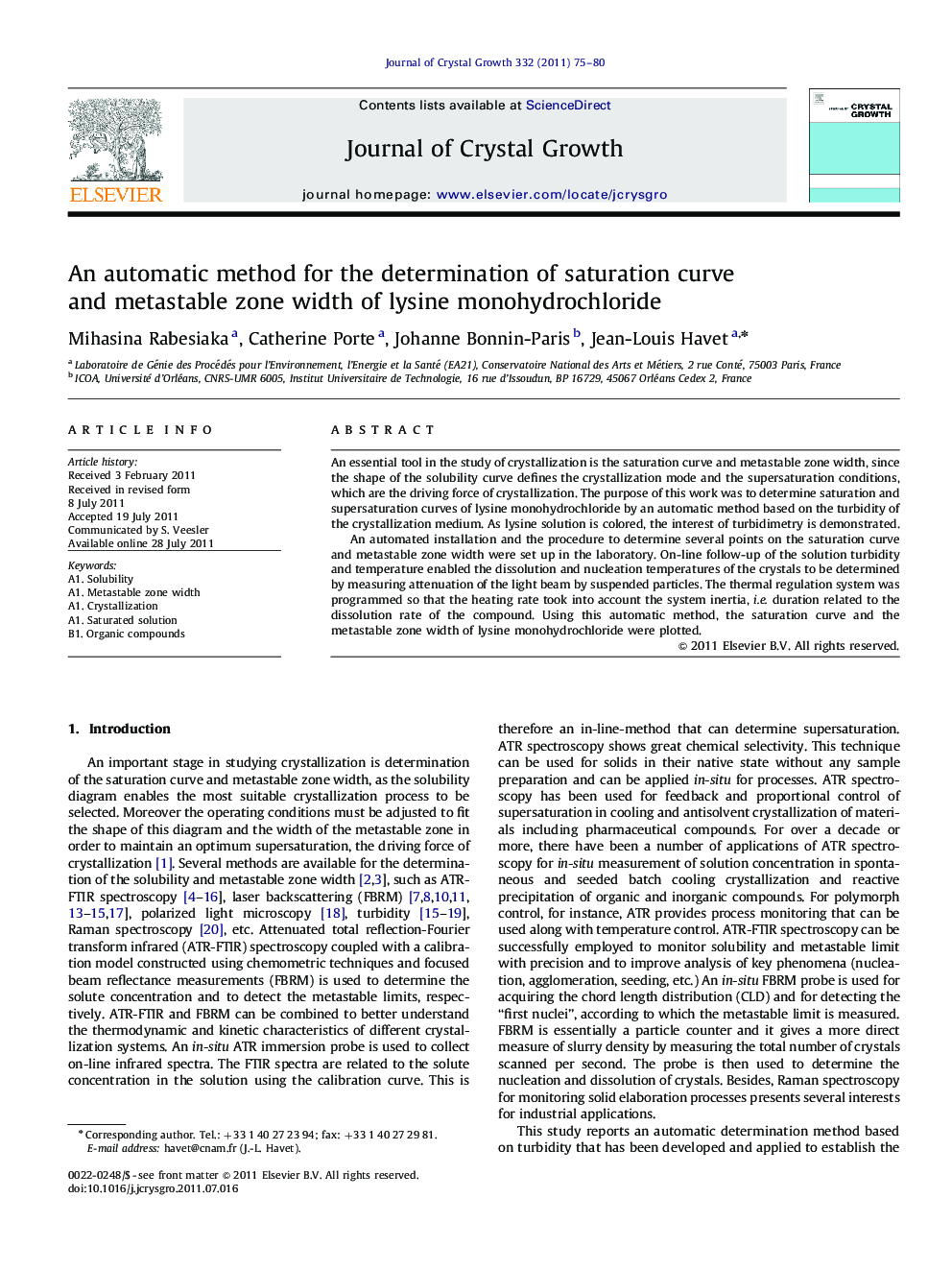| Article ID | Journal | Published Year | Pages | File Type |
|---|---|---|---|---|
| 1792076 | Journal of Crystal Growth | 2011 | 6 Pages |
An essential tool in the study of crystallization is the saturation curve and metastable zone width, since the shape of the solubility curve defines the crystallization mode and the supersaturation conditions, which are the driving force of crystallization. The purpose of this work was to determine saturation and supersaturation curves of lysine monohydrochloride by an automatic method based on the turbidity of the crystallization medium. As lysine solution is colored, the interest of turbidimetry is demonstrated.An automated installation and the procedure to determine several points on the saturation curve and metastable zone width were set up in the laboratory. On-line follow-up of the solution turbidity and temperature enabled the dissolution and nucleation temperatures of the crystals to be determined by measuring attenuation of the light beam by suspended particles. The thermal regulation system was programmed so that the heating rate took into account the system inertia, i.e. duration related to the dissolution rate of the compound. Using this automatic method, the saturation curve and the metastable zone width of lysine monohydrochloride were plotted.
► An automated installation and the procedure to determine the saturation and maximum supersaturation curves. ► The automatic method was based on the turbidity of crystallization medium. ► Heating rate took into account dissolution rate of the compound. ► Saturation and maximum supersaturation curves of lysine monohydrochloride were plotted. ► Results of automatic installation well correlated with results of gravimetric method.
